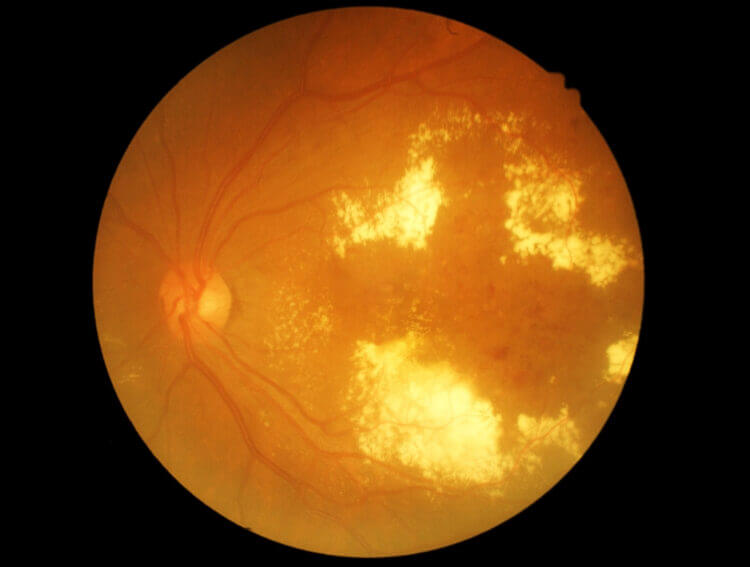
Diabetic retinopathy is caused by abnormal changes in the blood vessels of the retina. This damage to the blood vessels may cause them to swell and leak fluid into the retina, especially the macula. When fluid leaks into the macula, it swells causing the central vision to become blurred. This condition is called macula edema. This form of diabetic retinopathy caused by leakage of the retinal blood vessels is called Nonproliferative Diabetic Retinopathy (NPDR).
Another kind of diabetic retinopathy is Proliferative Diabetic Retinopathy (PDR). The retinal tissue depends on the blood vessels working properly to deliver nourishment. When the blood vessels become obstructed, this triggers growth and proliferation of abnormal new blood vessels. This process is called neovascularization. Neovascularization can cause blood to leak and the development of scar tissue which may result in severe loss of vision or blindness. This form of diabetic retinopathy is known as Proliferative Diabetic Retinopathy (PDR).
Treatments
Nonproliferative Diabetic Retinopathy (NPDR)
There are two types of laser surgery for NPDR – focal laser surgery and grid laser surgery. A focal laser is used in an attempt to stop the leakage and reduce the amount of fluid in the retina.
In some cases where retinal blood vessels appear to be leaking everywhere in the macula, grid laser surgery is used. Grid laser surgery has a chance of drying the macula and holding vision stable, however, it infrequently improves vision. Your doctor will determine whether focal, grid laser, or a combination of the two, is best to treat your condition.
Proliferative Diabetic Retinopathy (PDR)
When neovascualrization reaches a certain level, Panretinal Laser Photocoagulation (PRP) surgery can be done in an effort to prevent vision loss. The laser destroys all the damaged areas of the retina where blood vessels are obstructed.
